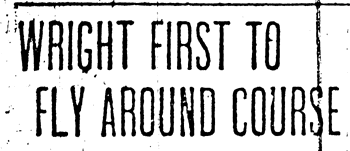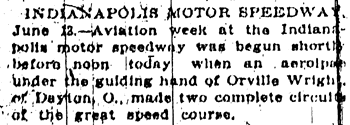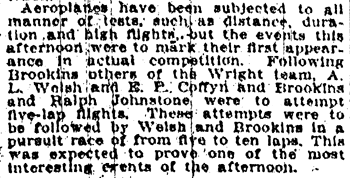Aviation at Indianapolis Motor Speedway

Nine balloons from across the U.S. gather at Indianapolis Motor Speedway, June 1909, for the first national balloon race.
Photograph: Indianapolis Motor Speedway Museum
Carl Fisher, who built the Indianapolis Motor Speedway, was a balloon enthusiast. In June 1909, Fisher hosted, at the Motor Speedway, the first national balloon race sponsored by the Aero Club of America.
As the photograph above shows, nine balloons were in the race. Fisher's balloon was the Indiana. He and his partner were aloft forty-nine and a half hours and landed in Tennessee. The balloon New York won the race.
A year later, the Motor Speedway was the site of the first licensed aviation meet in the U.S., June 13-18, 1910. The big news was the presence of Orville and Wilbur Wright and their team of six planes and expert pilots. Orville Wright was the first pilot to take off, his plane launched from a monorail. He circled the track twice and landed, impressing observers with his mastery. The feats accomplished in the days that followed led the newspaper to call the pilots "air wizards." One of the Wright pilots, Walter S. Brookins, rose to 4,384.5 feet, breaking the world altitude record.
Other flyers competing included Indianapolis native Melvin Marquette, an airplane builder and pilot. There were thirty-five events, with pilots trying to set records in altitude, distance, and speed.



Excerpt from Indianapolis News, June 13, 1910.
Sources: Jane Fisher, Fabulous Hoosier: A Story of American Achievement (New York: Robert M. McBride & Company, 1947); Indianapolis News, June 13, 1910; Indianapolis News articles, June 10-15, 1910.
![]() Visit the Indiana History Blog to learn about how the Speedway became an aviation hub during World War I.
Visit the Indiana History Blog to learn about how the Speedway became an aviation hub during World War I.
